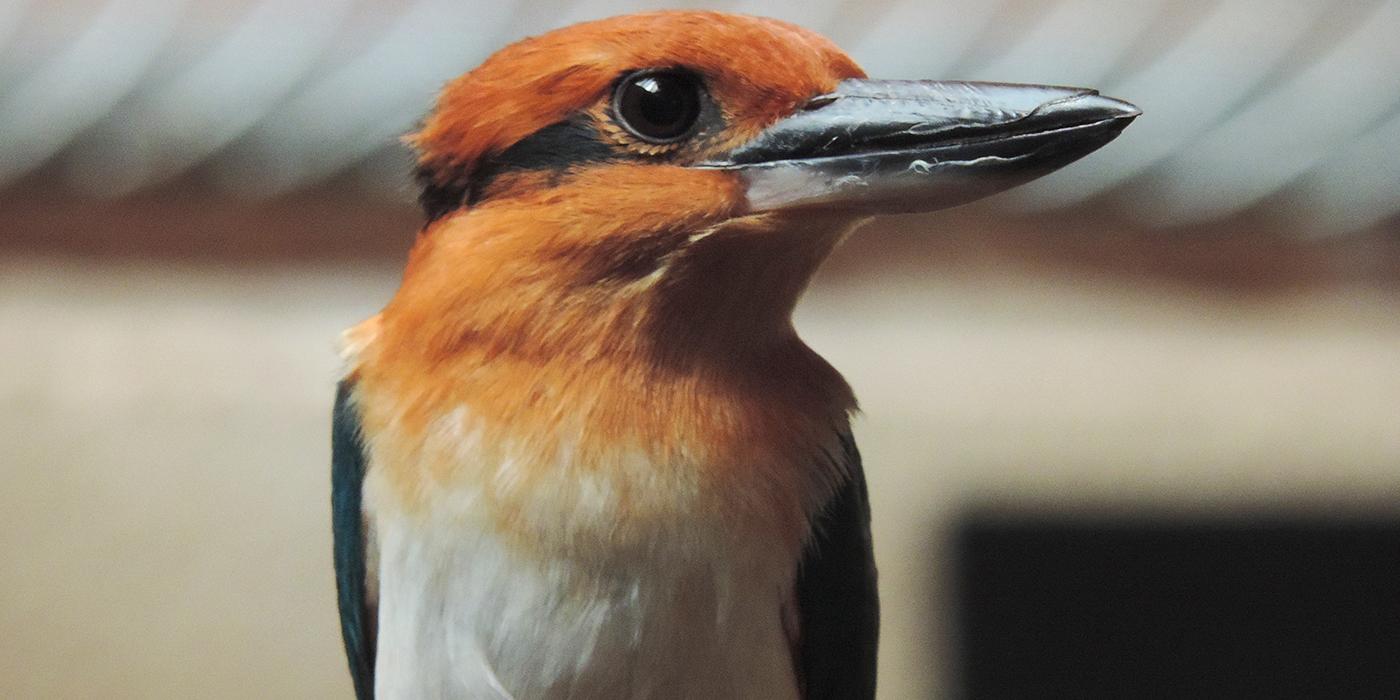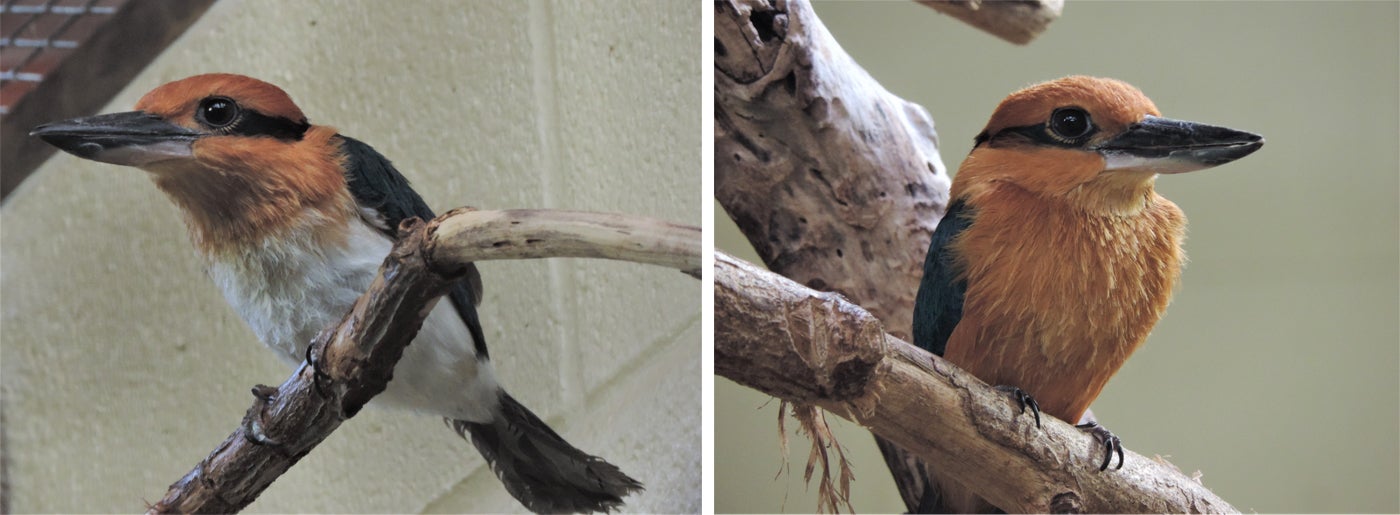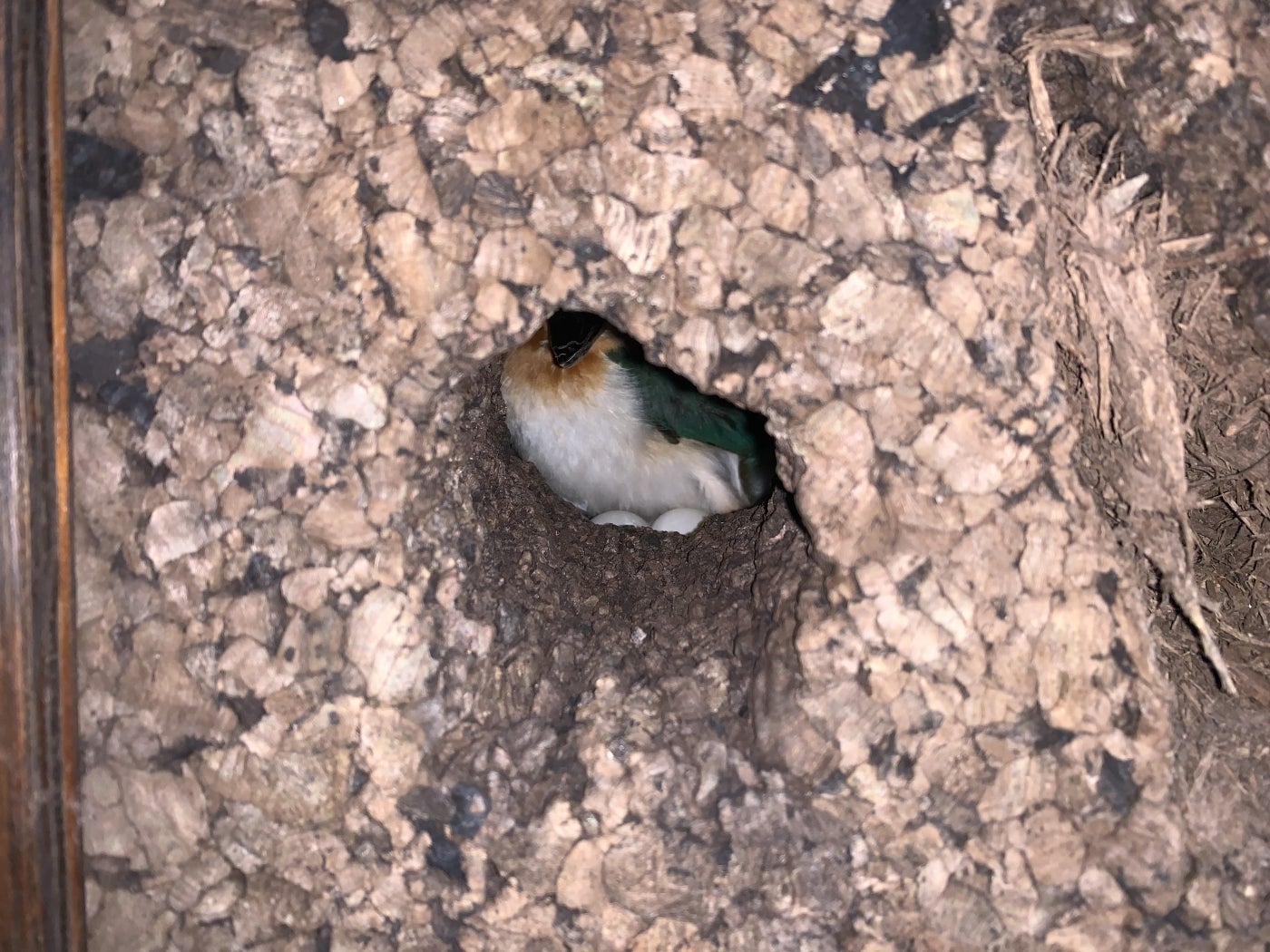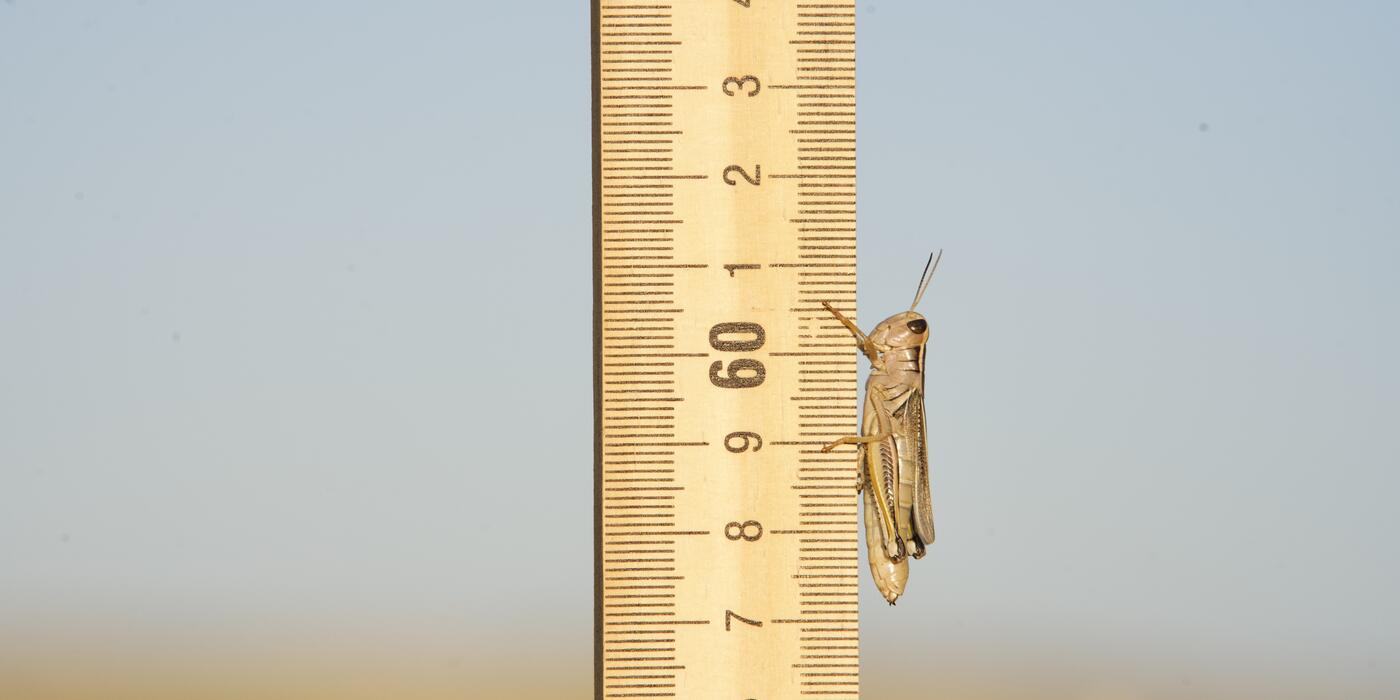Some Egg-citing News and a Few Love Bites

If you read my last update, you learned that Guam kingfishers are incredibly rare and notoriously difficult to breed. There are only 135 birds in the world, and all are living in human care, which means the species is currently extinct in the wild! But scientists around the world are working to change that by breeding the species for release in the near future.
Guam kingfishers tend to be picky about their partners, so we are always trying to find new ways to encourage pairs to breed. Last time, you met our youngest pair of Guam kingfishers, Animu and Giha, who were getting along quite well. Our second pair, 2-year-old male “Fuetsa” (fu-et-sah) and 8-year-old female “Kahåya” (ka-ha-ja), are displaying behaviors truer to the Guam kingfisher’s reputation.

Fuetsa and Kahåya — whose names mean strength and freed or rescued from danger, respectively, in Chamorro, the native language of the Marianna Archipelago — are our most genetically valuable pair. They have not had any chicks yet (and/or their siblings have not had any chicks). With only 135 Guam kingfishers left in the world, it’s important to have their genes represented in the population. So, Fuetsa and Kahåya are highly recommended to breed. Nevertheless, they are not as fond of each other as we would like them to be … yet!
We first introduced Fuetsa and Kahåya in January when both birds started to excavate nest cavities in their own enclosures. After several very positive introductions, we left the birds together. We heard them making unison calls and saw them taking turns drilling into one of their nest boxes, which were very good signs. Alas, the honeymoon only lasted two weeks before the bond between Fuetsa and Kahåya began to break down. Since then, they have gone through a few “break-ups.” They get along for a couple of weeks but then appear to become agitated with one another.
Because Guam kingfishers are known for being territorial, we closely monitor our pairs for any aggression. We document the range of behaviors that we see, especially if we spot any threat postures. Threat postures are behaviors the birds display if they are not getting along. Here are a few examples we have caught on video:
We might also see a bird with its feathers fluffed out to make itself look larger, or birds facing each other with their mouths wide open or wings outstretched. We also look for “bow threat,” which is when a bird bows its head low below the perch and then quickly raises it back up. Guam kingfisher pairs always have access to two enclosures in case they want to be apart, and we keep a close eye on them as they get to know each other. We look for these threat postures and monitor their eating habits to make sure one bird is not dominating all the food areas.
If we see any fighting, we separate the pair right away. Often, the birds will move on their own when we walk in, but we can also use nets to safely separate them. They can still see each other through a large mesh door, and branches extend through the door so that they can sit next to each other. Fuetsa and Kahåya often sit next to each other after a “break-up,” so we have attempted to reunite them several times. But it seems that they are just not ready to be together, so Fuetsa and Kahåya will be taking a break until they start to display more behaviors that tell us they are ready to breed.
Meanwhile, our youngest pair of Guam kingfishers is outshining all the others! In February, Animu and Giha laid their first clutch of two eggs. The eggs were not fertile, meaning there were no developing embryos inside, but this was not surprising given Animu’s young age. The youngest male known to have produced a fertile egg was 11 months old, and Animu was only 10 months old in February. The most exciting part was that Giha and Animu took care of the eggs all on their own. We often have to step in and incubate Guam kingfisher eggs, so the birds don’t break them or eject them from the nest. However, Animu and Giha were rock stars and incubated their eggs for 21 days.

Even though we knew the eggs were infertile, we gave Giha and Animu two “dummy eggs” and allowed them to incubate the eggs for the full term. This is especially important for new pairs, because we want to make sure they can properly care for eggs (and any subsequent chicks). It’s also how things would play out in the wild, because the birds would not know that their eggs were infertile. Dummy eggs are usually made of real eggshells that have been emptied and refilled with plaster. These allow us to check on the real eggs as they develop without disturbing the nest, because the birds can continue to incubate the dummy eggs. If the eggs just disappeared, the birds might think the nest had failed and abandon it.
Footage from camera traps installed in the birds’ habitat showed us that Giha did most of the incubation. Animu relieved her once in a while so she could take a break and eat, but she was never gone for long. As soon as she was ready to continue, she let him know that it was her turn:
We removed Animu and Giha’s dummy eggs on March 16. Just three days later, the pair moved to a different nest box and began excavating day and night. Giha appeared to do most of the work, while Animu sat close by making soft warbling sounds. After 12 days of excavating, Giha laid two more eggs in the new cavity! We are ecstatic to share that both eggs are fertile and developing. If all goes well, we can expect two chicks to hatch the week of April 20 — an important contribution to the Guam kingfisher population. Given how well Animu and Giha cared for their first two eggs, these new eggs will stay with them in the nest cavity until just before the chicks hatch.
Giha and Animu don’t have experience raising chicks, so it would be very difficult for them to rear two all on their own. To help, we plan to hand-rear one chick while they raise the other. We will provide supplemental feedings as needed and closely monitor Giha and Animu as they navigate this brand-new experience called parenting.
Stay tuned for more updates on our Guam kingfisher pairs and their soon-to-hatch chicks.
Help support the Smithsonian's National Zoo and Conservation Biology Institute's efforts to preserve extinct in the wild Guam kingfishers by donating to Conservation Nation, an initiative of Friends of the National Zoo.
Related Species:

